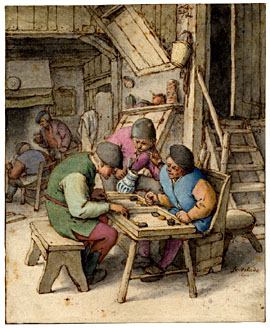|
| Magriel's NYT Columns |
 The modern trend in backgammon is to emphasize the attacking game. In many situations, however, attack is not possible, and winning requires precise defense.
The modern trend in backgammon is to emphasize the attacking game. In many situations, however, attack is not possible, and winning requires precise defense.
The most important points to own are defensive points in or adjacent to your opponent’s home board. The best of these, in order of importance, are the 20-point, 21-point, and 18-point. These points, called “advanced anchors,” provide a good measure of security. Holding merely a single one of them gives a significant amount of protection against being closed out or primed.
In the diagrammed position, White has escaped with both of his back men and is clearly far ahead in the race. Consequently, Black must set up his best possible defensive formation in hopes of getting a shot and hitting White.
|
| Black to play 4-1. |
|
|
|
With the 1, Black reenters and stays on the 24-point. The best way to complete the play is to use the 4 to bring a man out to White’s 16-point. Even though this man is now exposed to a triple shot, White gains nothing by hitting Black on the 16-point. By contrast, if Black leaves a single man on the 20-point White may profitably point on Black — possibly using the men on the 14- or 15-point.
Most players reason that if holding one advanced anchor is good, then two would be even better. Paradoxically, this is hardly ever the case in practice. The best players, in fact, often go out of their way to avoid holding two advanced anchors. Such a configuration makes inefficient use of your men. In addition, it is a burden to hold both for any length of time.
Rollout
 Tom Keith 2013 |
|
Money play Centered cube Black rolls 4-1 1296 games with VR Checker play: 2-ply Cube play: 3-ply Red |
| 4-1: | Game | G | BG | Equity | ||||
| 1 | bar/20 |
W L |
.3021 .6979 |
.0419 .1076 |
.0015 .0015 | −0.7352 |

| (a) |
| 2 | bar/24, 20/16 |
W L |
.3078 .6922 |
.0486 .2620 |
.0017 .0072 | −0.9594 | (0.2242) | (b) |

|
|

